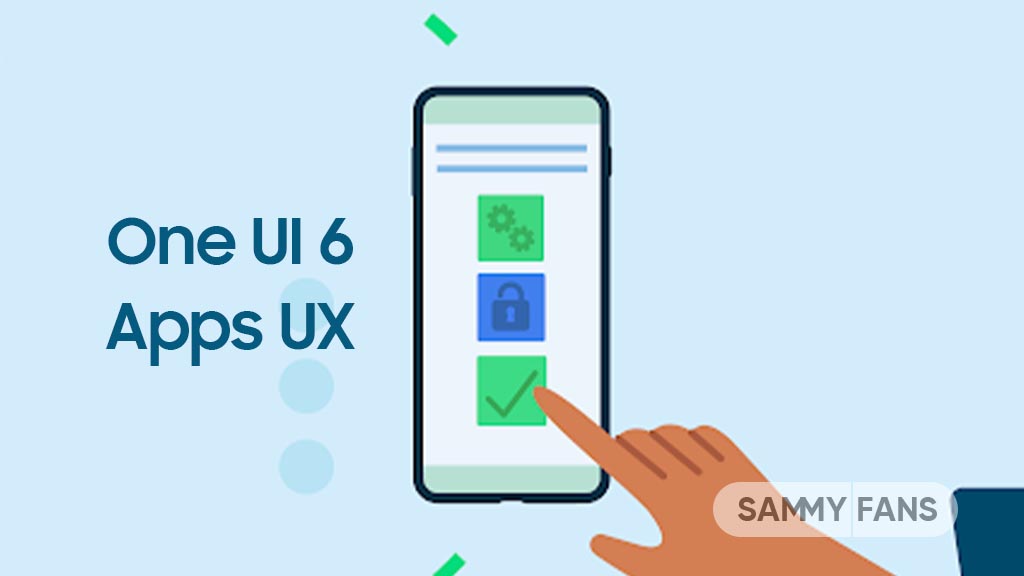Opinion
One UI 6 or 5.1 should bring Large Folders feature

With iOS version 14, Apple introduced a new way called App Library to find and organize the apps so iPhone consumers can see what they want and where they want. In iPhones, we can reach this destination by swiping Left until we get to the App Library.
Inside this section, iOS puts all the apps in different folders category-wise. For example, if you have Instagram installed, then you can find it from a big folder named Social in the App Library. This functionality is amazing, which further become interesting when Huawei managed to copy it for its devices.

iOS 14 App Library
By introducing HarmonyOS, its self-developed operating system, Huawei presented the Large Folders feature for smartphones. This feature is almost similar to that one iSheeps got with the iOS 14 on their iPhones’ App Library section.
Instead of creating a dedicated page on the homescreen, HarmonyOS introduces the Large Folders feature on the regular pages. Users can easily create Large Folders on the homescreen by just combining two apps together to create a regular folder.

Huawei P50 Pro
Once done, tap and hold the newly created folder then the OS provides you with an option to Enlarge the folder. The enlarged folder occupies the space of a total of 4 apps (2×2) on the homescreen. The interesting this about this feature is that you will be able to put 9 apps within the same space occupied by 4 apps, thanks to Large Folders.
Apps placed inside the Large Folder can directly be opened from the homescreen, however, you can tap on a Lil bit of blank space in the folder to expand it. Similar to the homescreen and regular folders, we can add even more than 9 apps, that can be found on the 2nd page inside the folder.
Have a look at this feature, in action | Credits – HC Newsroom
While Huawei has further improved the Large Folders functionality with its next-gen HarmonyOS version, other Chinese smartphone vendors have also included the same feature in their custom skins. OPPO (with ColorOS 13) is the most recent entry in the list of OEMs providing the Large Folders feature.

ColorOS 13
As OPPO failed to provide a clean appearance to the Large Folders’ functionality, HarmonyOS 3.0 take it to the next level. Well…, Chinese phone makers are introducing new user-friendly features with their custom skins based on the Android operating system, regularly, but, Samsung is far behind.
On the other hand, there’s nothing wonderful addition spotted in the One UI 5.0, based on Android 13 so far. At least, Samsung should add the Large Folders feature with the upcoming builds of the One UI 5.0 software for the Galaxy devices.
If it doesn’t happen, I’m dreaming to use the Large Folders feature with the forthcoming One UI 5.1, based on Android 13, or the Android 14-based One UI 6.0, which will arrive over a year later from now on. What do you think about it? Should Samsung bring the Large Folders feature, let us know through social media.

Credits:
- HC Newsroom
- iOS App Library – Apple
- P50 Pro – Huawei
- ColorOS 13 – XDA
Opinion
7 Android updates Sweet but Useless for Galaxy Z Flip 6, Z Fold 6

Samsung replicated Google’s promise of Android updates, but the plus point is that mid-range and budget Galaxy phones are eligible for at least four major OS upgrades. The upcoming Galaxy Z Flip 6 and Z Fold 6 will also be honored with 7 major Android updates.
The Korean tech giant offers the longest software update support in the Android industry. Google’s OS update promise starts from the Pixel 8 series. While mid-range and budget Samsung phones get four Android updates, the premium Galaxy Z Flip 6 and Z Fold 6 will get 7.
Earlier this year, Samsung launched the Galaxy S24 series smartphones. The lineup is guaranteed for at least seven OS upgrades. The strategy was earlier expected to be applied to Galaxy A55, but the company kept it limited to the flagship phones.
Samsung doesn’t officially consider Galaxy Z as flagship lineup, but it’s the most premium segment. All the novelties that Galaxy S receives also come to foldable phones. Therefore, it’s certain that the company will support its upcoming Galaxy Z phones for 7 years.
Will they survive 7 years?
Sporting a foldable display entirely ends the discussion of longevity. Besides, the pre-applied screen protection film starts to damage within a year of normal usage. Samsung’s innovative foldables are available internationally but support isn’t.
Samsung Care+ plan is also offered by the phone maker for additional protection. However, it still requires the owner to pay the processing fee, which isn’t considerable. Also, the Care+ plan doesn’t cover the Samsung-slapped screen protector film.
So if the Korean phone maker is willing for longer software support, it should rather offer a two-year replacement guarantee on manufacture defects. It would push consumers to prefer foldable phones as they won’t have to worry about display concerns.

Pre-reserve the next Galaxy and get a $50 Samsung Credit and massive savings. When you pre-order any of the upcoming devices, you will be honored with multiple benefits. You will not only get Instant Samsung Credit but also savings of up to $1500.
Unpacked 2024 ‘Pre-reserve’ ends soon, secure your $50 Samsung Credit
Opinion
Android Updates War: Google’s Game-Changing Move to Outshine Samsung

When it comes to Android updates, Samsung is leading the Android world. However, this could be the last day of Samsung’s leadership as Google is expected to double up its current Android updates support for Pixel smartphones launching today.
2020 was a remarkable year in Samsung’s history when the company extended Android updates support from two years to three. A few months later, the company extended the security support as well, totaling it to four years for flagship Galaxy devices.
Follow our socials → Google News | Telegram | X/Twitter | Facebook | WhatsApp
In 2022, Samsung launched the Galaxy S22 series, which offers four generations of OS upgrades. In its announcement, the company listed all flagships launched in 2021 and later along with select Galaxy A series smartphones for 4 OS and 5 years of security patches.
With this decision, the South Korean tech giant surpassed Google’s support policy, which owns Android. To be noted, Tensor-powered Pixel smartphones come with three years of Android and five years of monthly security updates support.
Today, Google will launch the Pixel 8 and Pixel 8 Pro smartphones. And as per the leaks, both phones will offer up to 7 years of software support, surpassing the longest support provided by Apple to its iPhones. Pixel 8 and later might be eligible for 7 major OS upgrades, which sounds a bit confusing.
There are speculations that there will be five major OS versions and 7 years of regular security patches and quarterly Pixel Feature Drops for the latest flagship smartphones. If it happens, it will force other Android vendors to further extend their support.
While Pixel phones are limited to support 3 major OS versions, Samsung is offering 4 generations of OS upgrades to cheaper Galaxy devices that costs approx $249. Samsung won’t take too long to beat Google yet again in terms of software support.
Let’s see, what Google has to offer to the Android world!
Opinion
Here’s why Samsung apps start getting One UI 6 support ahead of official release

After One UI 5.1, we started hearing a lot of news, leaks, and rumors about the upcoming One UI 6. Recently, Samsung has also started releasing One UI 6.0 support for stock apps, starting with the Calculator app.
Looking at all this, we can expect that Samsung will provide this support to more apps in the future too. But the question is, why is Samsung providing One UI 6.0 support to its stocks apps before the official release? If you are thinking that by getting their support, you will get some new features in your apps, then it is not only the reason.
Samsung One UI 6.0 support can also bring new features for apps, but the main reason for this is something else. But what? The answer is that Samsung is going to release a new One UI update in the coming weeks or months and the company aims to make its stock apps compatible with that accordingly. Once the app is supported, the app will not stop working or get crash whenever the company releases that update for the smartphone.

A recent report revealed that Samsung’s stable Android 14 update will be available in October. This is the same time frame as last year’s UI rollout, with the latest Galaxy S lineup being the first to secure it. Meanwhile, beta activity is seeing an early start if everything goes as planned by the internals.
Still, for the time being, we can consider this information as a pinch of salt as the company has not yet announced any official timeline for One UI 6.0.
Samsung confirms One UI 6 and Good Lock features finding underway










